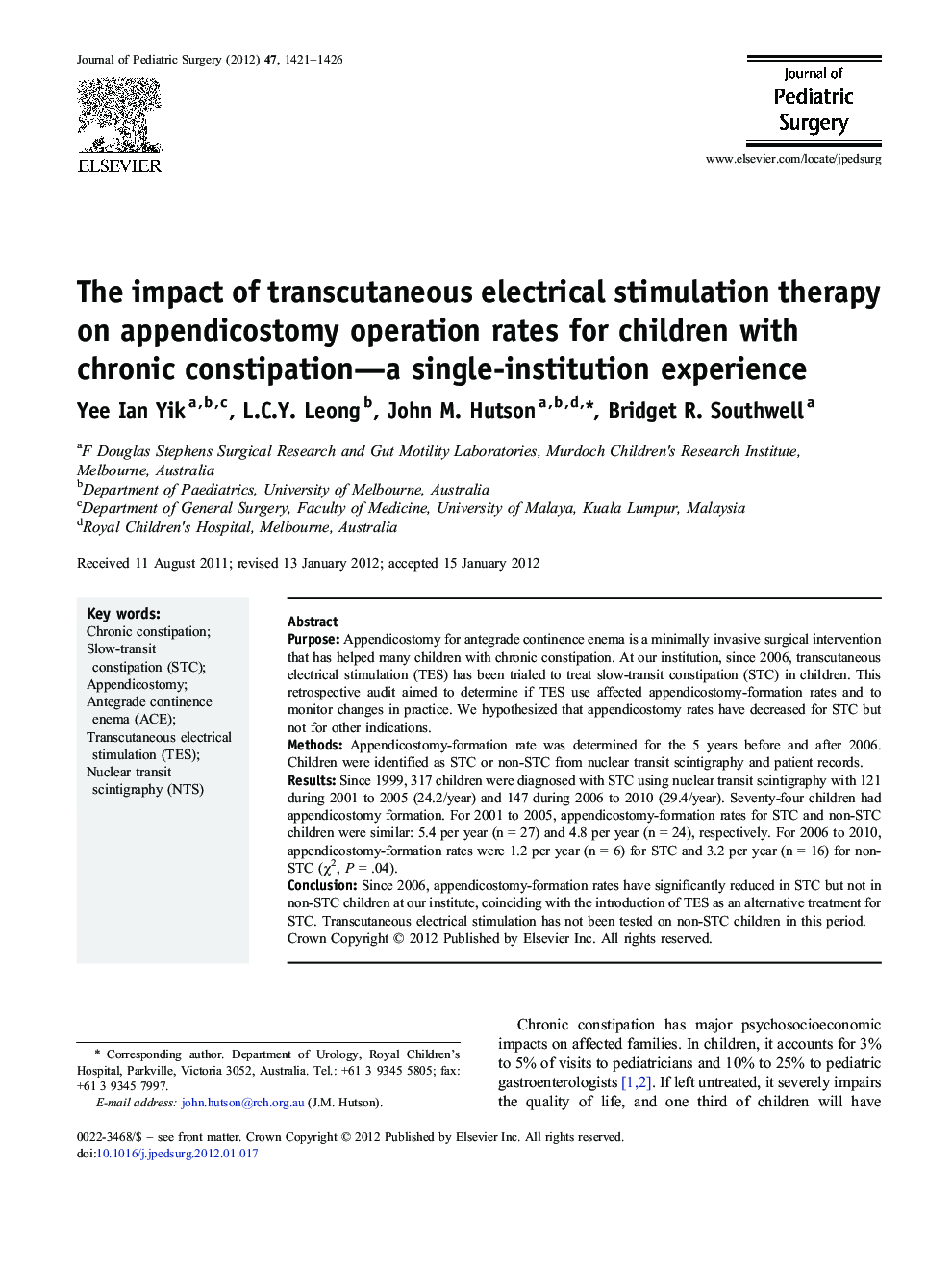| Article ID | Journal | Published Year | Pages | File Type |
|---|---|---|---|---|
| 4156825 | Journal of Pediatric Surgery | 2012 | 6 Pages |
PurposeAppendicostomy for antegrade continence enema is a minimally invasive surgical intervention that has helped many children with chronic constipation. At our institution, since 2006, transcutaneous electrical stimulation (TES) has been trialed to treat slow-transit constipation (STC) in children. This retrospective audit aimed to determine if TES use affected appendicostomy-formation rates and to monitor changes in practice. We hypothesized that appendicostomy rates have decreased for STC but not for other indications.MethodsAppendicostomy-formation rate was determined for the 5 years before and after 2006. Children were identified as STC or non-STC from nuclear transit scintigraphy and patient records.ResultsSince 1999, 317 children were diagnosed with STC using nuclear transit scintigraphy with 121 during 2001 to 2005 (24.2/year) and 147 during 2006 to 2010 (29.4/year). Seventy-four children had appendicostomy formation. For 2001 to 2005, appendicostomy-formation rates for STC and non-STC children were similar: 5.4 per year (n = 27) and 4.8 per year (n = 24), respectively. For 2006 to 2010, appendicostomy-formation rates were 1.2 per year (n = 6) for STC and 3.2 per year (n = 16) for non-STC (χ2, P = .04).ConclusionSince 2006, appendicostomy-formation rates have significantly reduced in STC but not in non-STC children at our institute, coinciding with the introduction of TES as an alternative treatment for STC. Transcutaneous electrical stimulation has not been tested on non-STC children in this period.
